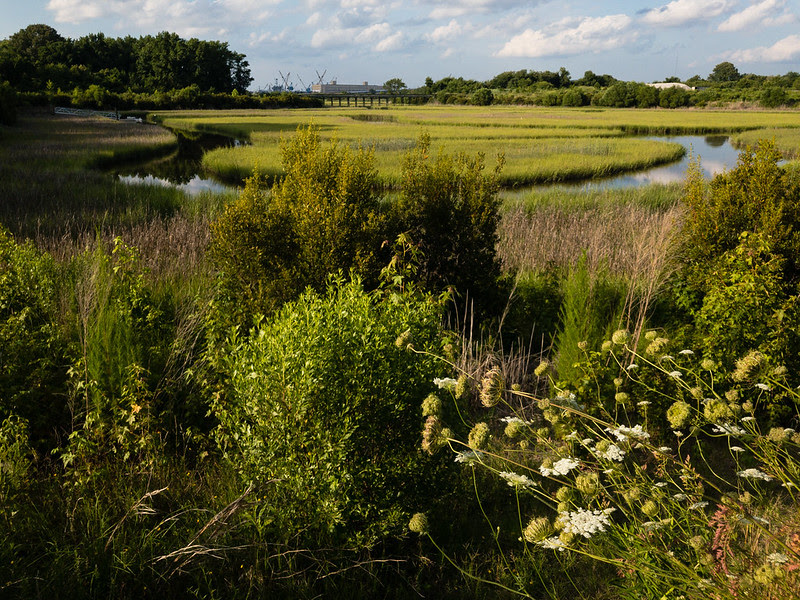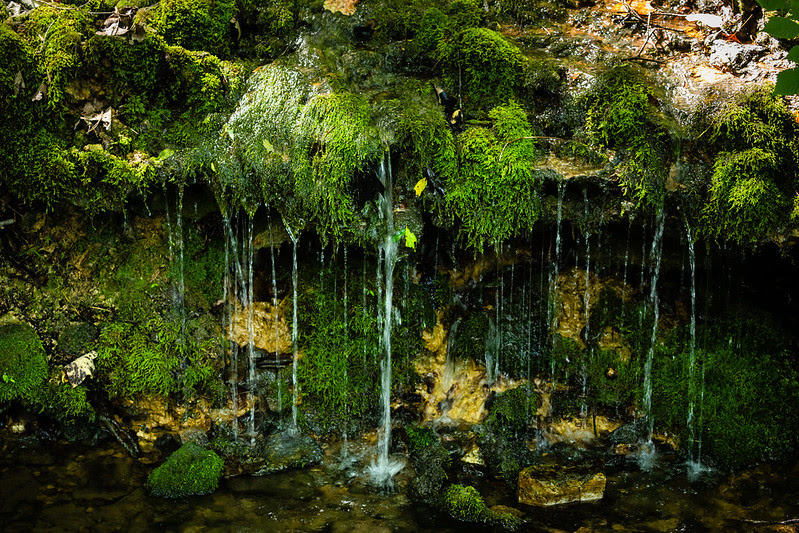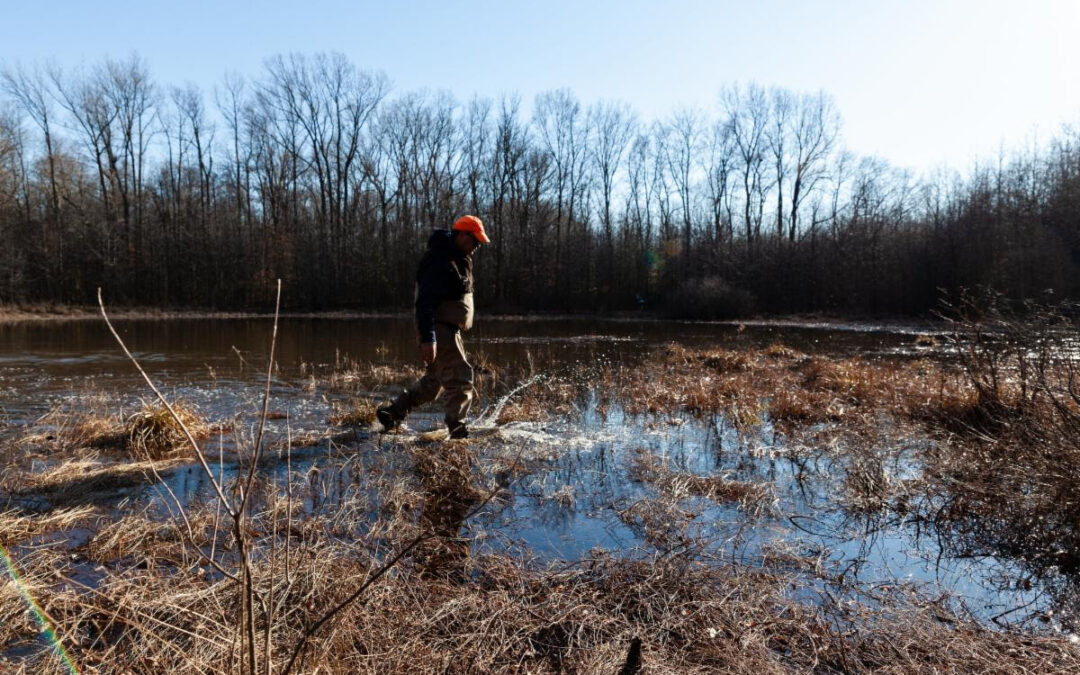Scott Smith of Maryland Department of Natural Resources looks for tiger salamander egg masses in a Delmarva bay wetland in Kent County, MD
Written by Jamal Childs
We are less than a year away from 2025- the deadline set over a decade ago in the Chesapeake Bay Agreement to put in place several of the programs and practices to recover a watershed with clean water, abundant life, conserved lands and access to the water for all. The Chesapeake Bay Program established a Beyond 2025 Steering Committee to prepare recommendations to look beyond 2025 and outline the future of the Chesapeake Bay Partnership. The coming months will be incredibly important for the Chesapeake Conservation Partnership to speak up and make sure our voice is heard to help shape the future of the Chesapeake Bay Watershed.
The Chesapeake Bay, a vital ecosystem facing the challenges of climate change, has found its guardians in the Chesapeake Bay Program (CBP). As the threats to the Chesapeake Bay intensify, the Chesapeake Conservation Partnership members have the opportunity to emphasize the crucial role of conservation, urging its integration as a foundational principle in the Bay Program and a complement to restoration. This article examines the pressing issues, the importance of permanent land conservation for restoring wetland forest buffers and other habitats, the preservation of agricultural land, the protection of source water and healthy water, access to nature and the changes required for the long-term well-being of the Chesapeake watershed.
Kristin Saunders, the Chesapeake Bay Cross Program Coordinator, recently shared crucial action steps aimed at fostering community engagement and collaboration. She is working with the Beyond 2025 Steering Committee so that stakeholders can convey their vision for the future and share ideas and recommendations. This winter and spring, small groups of the Beyond 2025 Steering Committee will convene meetings on climate, healthy watersheds, shallow waters, clean water, and people. These small groups will examine their vision beyond 2025, evaluate the value of the existing goals and outcomes in the agreement and recommend vanguard ideas for changes in the future. Stakeholders are invited to contribute to the small groups as subject matter experts and in listening sessions that will be held throughout January and February.

The wetlands at Paradise Creek Nature Park are seen in Portsmouth, VA
Saunders encouraged individuals interested in participating or offering insights to connect directly with the respective small group leaders. A significant date is the upcoming February 28-29 symposium at the Susquehanna River Basin Commission, where draft recommendations from all groups will be presented. The virtual option for stakeholders ensures accessibility, with details available on the Chesapeakebay.net calendar. Saunders emphasized the importance of public engagement through listening sessions by each small group, mirroring the successful approach taken by the shallow waters group in early January. Anticipating draft recommendations from the steering committee will be open for public comment between May-June, she encourages our engagement now and throughout the rest of the calendar year to shape the future course of Chesapeake Bay conservation initiatives. The process is structured to allow not just public reaction to but also co-development of the recommendations.
Ways to get involved:
- Attend upcoming steering committee meetings and small group listening sessions, such as the Beyond 2025 Steering Committee February Meeting (held virtually)
- Comment during official comment periods May-June
- Register for meetings and follow-up materials at the Steering Committee page https://www.chesapeakebay.net/who/group/beyond-2025-steering-committee
- For more information, reach out to Beyond 2025 steering committee members

A restored stream for brook trout in Hardy County, WV
Conservation should be foundational for the Chesapeake Bay program. It’s not merely a strategy but a secure preventive approach that can position the program for success, providing a sustainable framework beyond the current goals set for 2025. Partners have the opportunity to ensure that conservation becomes an integral part of the Chesapeake Bay Program’s projects and policies, connecting to all initiatives. In order for us to effectively address the long-term effects that climate change will have on the Bay, its watershed, and the people who live there, we must make significant ongoing changes.
While the Bay has set wetlands restoration goals, a looming challenge is the disappearance of land, with the Chesapeake Bay losing approximately 70 acres of forest land a day. The amount of wetlands overall is declining as a result of land subsidence, climate change, and development pressures, even though progress shows that wetlands are being created and restored throughout the watershed.
Insights from the Scientific and Technical Advisory Committee (CESR) report highlight ongoing changes in the Bay system, emphasizing the need for a shift in focus. “The Bay system faces permanent and ongoing changes in land use, climate change, population growth and economic development that will challenge notions of restoration based on recreating historical conditions. …Opportunities to meet these challenges exist but efforts require changes and new approaches to implementation, planning, and decision-making.” The Committee sees permanent land conservation as the most direct way to save ecologically and economically significant places.
To truly meet our restoration goals, we must expand beyond pollution control when measuring the health of the Bay. The Total Maximum Daily Loads (TMDL) are important when considering the quality of water, but it would serve us to protect wetlands, riparian buffers and forests that act as the natural filter system within the watershed. The land produces our food, purifies our water and houses a variety of locations where we sleep, work, play and find comfort. Land conservation in the Chesapeake Bay Watershed will support working forests, farms and communities while preserving habitat and water quality. Healthy aquatic habitats and communities are maintained by the natural hydrology and flow patterns that are supported by natural land cover types like forests, wetlands and natural grasslands.
Permanent conservation is already a focus of the Chesapeake Bay Program through its Protected Lands Outcome. More protection is required to help put many of the other goals back on track, even though the “Protected Lands Outcome” is moving forward as planned.

Sixth grade students Anaya Ekongolo, left, and Abby Liggett from Old Middle School plant an American hornbeam tree along a recently restored stretch of Severn Run in Anne Arundel County.
Conservation goes beyond regulatory measures; it is a voluntary, foundational approach. Conservation should underpin efforts to reach Bay Program goals, emphasizing its potential in addressing the root causes of issues affecting the Bay. By focusing on the source of problems, conservation becomes a proactive strategy rather than a reactive response.
Public access, community engagement and stewardship are integral components of the conservation narrative. We must emphasize the need for equity and diversity so that all citizens can enjoy a healthy Chesapeake Bay. Expanding the narrative beyond pollution control to create a comprehensive and inclusive strategy. By ensuring that conservation efforts consider the broader societal context as we aim to build a more resilient and equitable Chesapeake Bay. Land conservation in all forms provides for the necessary habitat to sustain people and living resources and allows natural systems to remain resilient to ever-present change. We want to convey the integral role conservation plays in meeting the vision of a future healthy Chesapeake Watershed and advocate for its rightful place as a foundational priority and complement to restoration actions.
Image credit:
- Chesapeake Bay Program February, 2022
- Chesapeake Bay Program January, 2017
- Chesapeake Bay Program December, 2022
- Chesapeake Bay Program March, 2023
Lightning Update is a regular communication of the Chesapeake Conservation Partnership. Any opinions expressed are those of the authors and do not necessarily reflect positions of the Partnership or member organizations.
To share a success story, news, or important event, send your information to:
Support for the Chesapeake Conservation Partnership is provided by:
National Park Service Chesapeake
EPA Chesapeake Bay Program
USDA Forest Service
Pennsylvania Department of Conservation & Natural Resources
Maryland Department of Natural Resources
Virginia Outdoors Foundation
US Fish & Wildlife Service
Chesapeake Conservancy
The Chesapeake Conservation Partnership is co-convened by:




